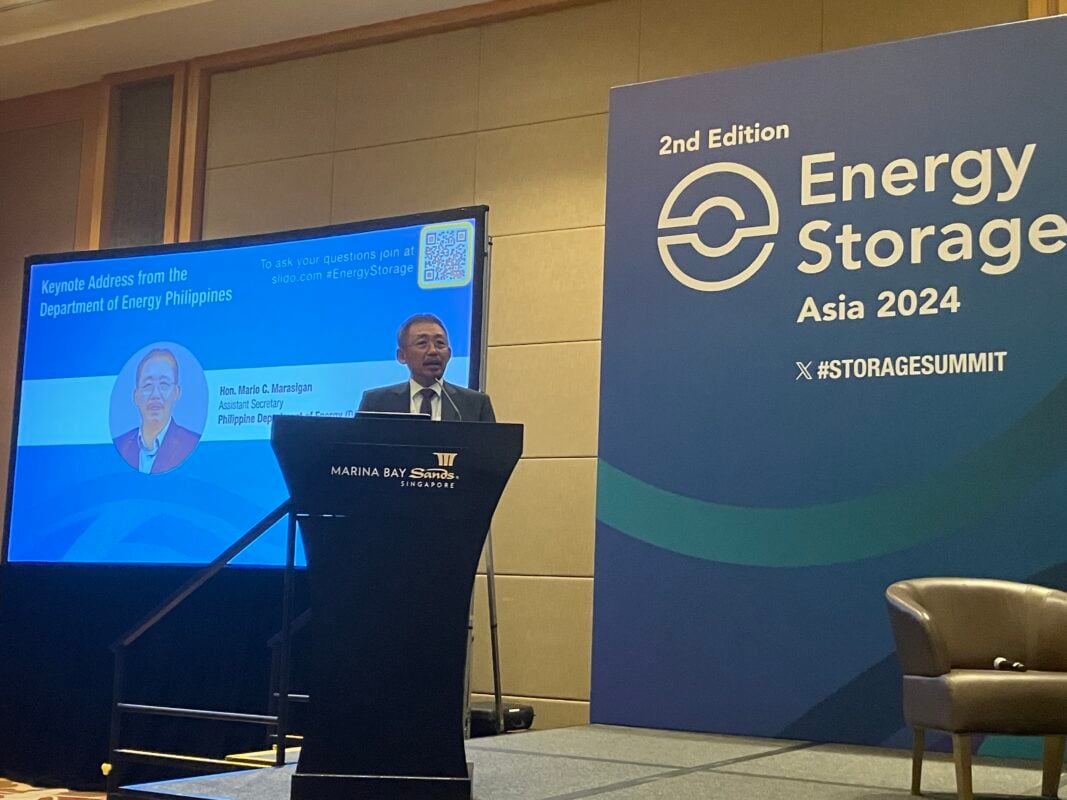
The DOE assistant secretary acknowledged “the increasing importance of energy storage systems, in our goal towards a sustainable and resilient energy future,” as he opened his speech at the event in Singapore.
Marasigan drew the audience’s attention to the Philippines Energy Plan 2023-2050, the policy document that sets out the strategic direction and implementation of energy system planning through to the middle of the century.
That includes approaching high renewable energy targets, such as a rapid approach towards a 35% share by 2030 and 50% by 2040, and continuing to steadily increase from there.
“Our journey towards a cleaner future is marked by the widespread adoption of variable renewable energy sources, such as solar, and the Philippine Energy Plan of 2023 to 2050,” the assistant secretary said.
The government has implemented market-driven mechanisms to support those aims, such as Renewable Portfolio Standards (RPS), a green energy auction programme with a framework for new additional renewables capacity, “to ensure the provision of adequate supply under a competitive process,” and a market for trading Renewable Energy Credits (RECs) for RPS-certified generation.
There have also been programmes to enable consumers to switch to renewable energy retail suppliers, among other initiatives, while the assistant secretary also noted that the government encourages foreign investment into the energy sector.
Energy storage is considered an important tool to accommodate that growth in renewables and deal with the challenges that the variability of solar generation brings for grid stability.
Philippine president Ferdinand Bongbong Marcos Jr last year attended the inauguration of a 90MWh grid-scale BESS asset and commented on the importance the government has placed on storage for those reasons.
Marasigan said that while all options were being considered that enable the country to meet its targets, including pumped hydro energy storage (PHES), the country has just one existing pumped hydro plant build decades ago, and the long lead times for constructing new facilities, of roughly five to seven years according to the DOE representative, mean that battery storage is at the “forefront of our energy storage needs”.
The 2023-2050 Energy Plan requires at least 20GW of energy storage deployments under modelled scenarios, the DOE representative said, and “proactive steps” are being taken on a national level to accelerate storage deployment.
“For example, the Department of Energy will conduct a green energy auction for variable renewable energy integrated with energy storage systems towards the end of the year,” Marasigan said.
“This initiative aims to support the development of energy storage, particularly batteries, and increase the utilisation of renewable energy resources across our entire grid system. This auction is expected to promote integrated variable renewable energy and energy storage systems and encourage the adoption of integrated solutions that combine our renewable energy with energy storage. It will also enhance the fiscal incentives for our energy storage systems.”
Marasigan said that BESS paired with renewables would be treated as a component of the complete renewable energy generation asset under the auction’s regulatory conditions, while later, in response to an audience question during an afternoon panel discussion said this would mean they would not lose “must-run” priority dispatch status.
The Philippines government will also launch a call for renewable energy and energy storage microgrids in rural areas to reduce or displace the use of diesel generation, targeting the deployment of solar PV, BESS and diesel genset backup at about 48 locations in the archipelago, soon, the assistant secretary said.
Energy-Storage.news’ publisher Solar Media is hosting the 2nd Energy Storage Summit Asia, 9-10 July 2024 in Singapore. The event will help give clarity on this nascent, yet quickly growing market, bringing together a community of credible independent generators, policymakers, banks, funds, off-takers and technology providers. For more information, go to the website.

